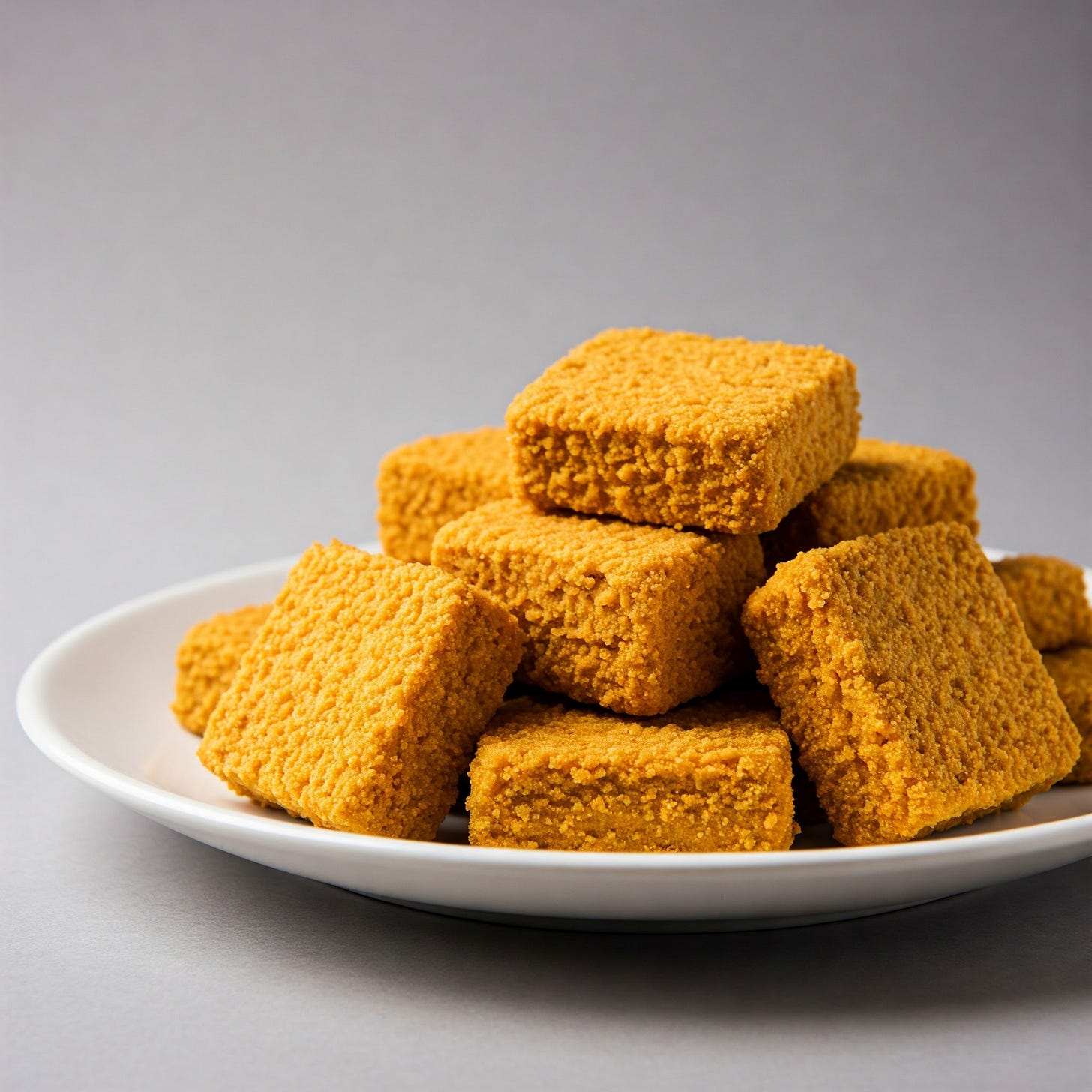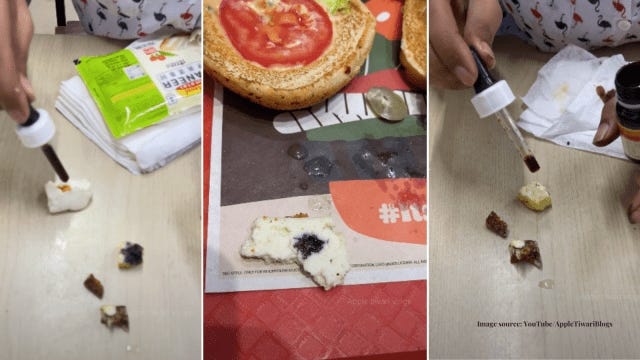Paneer - India's most dangerous food
FSSAI speaks out
Good morning! It’s Tuesday, and if you thought your breakfast bhurji or dinner shahi paneer was safe – well, this might be the day you stop trusting your taste buds.
A viral video has rekindled one of India’s most overlooked food safety nightmares. What started as a dramatic Instagram reel has now peeled open a disturbing nationwide crisis.
Let’s break it down…
It all started with a reel...
Apple Tiwari, a content creator with over 6.5 lakh followers, recently visited three fast food giants, Domino’s, McDonald’s, and Burger King, armed with nothing but iodine tincture and a mission: to bust fake paneer.
Her video, now viral, shows her testing paneer from their respective dishes. Each piece, after getting a few dabs of iodine, turned a scary blue-black.
Her verdict? “Fake paneer!”
The caption screamed urgency: “Say NO to nakli paneer!” It wasn’t long before the internet exploded with reactions, shock, outrage, memes, and, of course, furious brand responses.
But wait... Science interfered with her experiment
Experts and netizens alike pointed out that the iodine test is legit only on raw paneer, not fried or marinated versions.
McDonald’s responded swiftly, stating their paneer is 100% dairy-based, FSSAI-certified, and any starch seen is from the outer coating of the patty, not the paneer itself.
Domino’s echoed a similar stance, slamming the video as misleading and hinting at legal action.
Even users in the comments chimed in, calling the test flawed and the creator misinformed.
One user summed it up perfectly: “Influencers need a science class before a camera.”
But here’s the twist: the misinformation may have accidentally done something right.FSSAI drops a bombshell report
While Apple’s reel may have been overcooked, the Food Safety and Standards Authority of India (FSSAI) just served us the real horror story.
Between April 2024 and March 2025, FSSAI tested paneer samples across India. The results?
1. 83% failed basic food safety standards.
2. 40% were outright dangerous for consumption.
The culprit? A mix of synthetic milk, starch, palm oil, and even detergent.It’s not just a bad recipe, it’s a full-blown health hazard.
In January 2025, Hyderabad’s Cyberabad Special Operations Team raided a paneer unit in Alwal. They seized 600 kilograms of fake paneer. A few months earlier, another raid near the city uncovered a similar operation. This isn’t a one-off: it’s a pattern.
📌 So, how to spot the fakes?
If you're buying raw paneer at home, here are a few tricks:
Iodine test (correctly done): Raw paneer turns blue with iodine if starch is present.
Touch test: Real paneer is soft and crumbly, fake ones are rubbery.
Boil it: Fake paneer disintegrates or leaves oil residue.
Taste: Real paneer is mildly sweet; fake versions taste bland or slightly soapy.
Skip these for fried or pre-cooked products, they don’t apply there.
⚠️ This is a wake-up call
Yes, some influencers may be chasing clicks, but the larger truth is undeniable - India has a paneer problem.
For a country where paneer is a staple protein for millions, food adulteration isn’t just a health issue, it’s a systemic failure.
It’s high time we demand:
Stricter food audits
Transparent sourcing
Public awareness campaigns
Until then, check your cheese and maybe skip that suspicious shahi paneer.
So, that’s it for today. If you enjoyed this edition, subscribe to hear from us every day!
See ya 👋




The FSSAI has been alarmingly complacent — asleep at the wheel while public health hangs in the balance. Food licenses are handed out like freebies, often greased by those willing to pay off the system. There’s no rigorous safety audit, no genuine accountability, and certainly no regard for the lives at stake. Time and again, both the government and the food safety authorities have failed us. First it was contaminated spices, now it’s adulterated paneer — what’s next? At this rate, nothing we consume will be safe. This is not just negligence; it’s a betrayal of public trust.